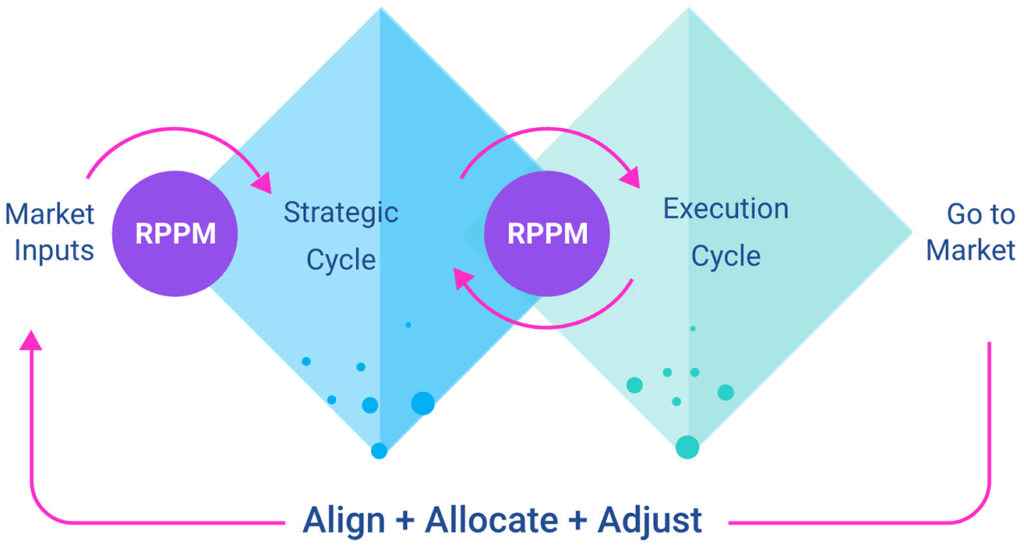What makes a successful Chief Product Officer (CPO)? How can product leaders make outcome-focused product decisions that also will have the biggest impacts given the time horizon and resource availability?
A successful Chief Product Officer applies a portfolio approach to balance the needs of customers, business goals (OKRs) and engineering capabilities to achieve the best product outcome. Elite product organizations can achieve near-term results and long-term vision within limited time and resources by applying the responsive PPM principles: 3-operating horizons, merging strategic and execution cycle, leveraging MoAR for prioritization, and responsively re-allocating.
Three Operating Horizons
Every organization has long-term, mid-term, as well as near-term focuses and activities, corresponding to the levels of operations. Operating cycles like annual planning, quarterly planning, and sprint planning ensue. Additionally, time horizons of annual, quarterly, and bi-weekly goals connect to enable alignment and autonomy between levels.

Double Diamond Strategy & Execution
The portfolio roadmap process has two distinct and interconnected phases: Strategic Cycle and Execution Cycle. Each cycle focuses on a different time horizon at the same operating level. For instance, the Strategic Cycle focuses on defining objectives, evaluating opportunities, and assessing resource allocation. The outputs of the Strategic Cycle then become the goals for the Execution Cycle.

MoAR Prioritization
MoAR can replace ROI for effective Product Portfolio Prioritization. Why? The Metrics over Available Resources (MoAR) model allows you to evaluate based on what matters most at a given time. Product leaders define relevant goals and metrics responsively based on the state of the organization. Product resources are then prioritized and allocated to best “move the needle” given the metrics and available resources.

Responsive Re-allocation
Responsive product portfolio allocates multi-dimensionally to provide autonomy in the execution cycle to empower innovation and faster decisions. Once the outcome has been achieved, adjustments take place to re-allocate towards the most impactful areas of the portfolio.

Responsive Product Portfolio Management (“Responsive PPM”) is a framework that dynamically connects objectives, customers’ needs, products, and resources with execution to accelerate outcomes responsive to the state of the organization and the market. Chief Product Officers that thrive are those that view their product as a portfolio and also take a responsive approach to planning, strategizing, allocating, and dynamically re-adjusting.




